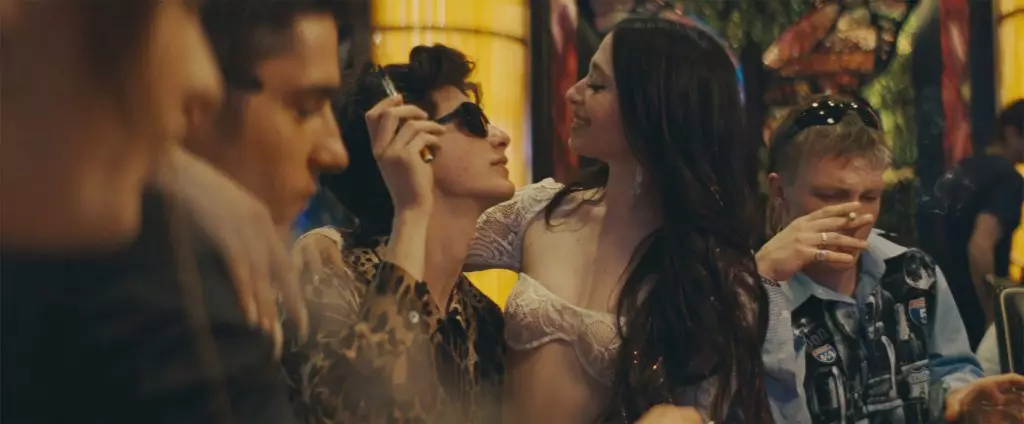The weekend box office for independent films has showcased significant successes, signaling a robust market for such cinematic endeavors. As audiences increasingly hunger for original narratives away from franchise fatigue, films such as Anora and We Live In Time have emerged as significant players, revolutionizing their respective genres and earning critical accolades. This article delves into these cinematic milestones and their impact on the indie film landscape.
Leading the charge is Anora, which has captivated audiences and critics alike. With an astounding per-screen average (PSA) of $90k on just six screens, the film grossed a remarkable $540k in its debut weekend. This impressive statistic catapults Anora to the forefront of indie cinema in 2024, marking it as the best opener of the year. Directed by the acclaimed Sean Baker, known for his unique storytelling style, Anora has garnered a Rotten Tomatoes rating of 98%. Its narrative revolves around Ani, a young sex worker in Brooklyn whose life spirals into chaos following an impulsive marriage to a Russian billionaire’s son. The film’s blend of humor and social commentary is juxtaposed against the intense backdrop of modern societal issues, making it a compelling watch.
Furthermore, Anora’s positioning as the second highest PSA post-pandemic highlights the film’s capacity to resonate with audiences on a profound level. Comparisons to the critically celebrated Parasite, which made waves in the arthouse circuit and grossed $53 million domestically, underscore the potential for Anora to similarly transcend genre boundaries. As it continues its theatrical rollout into the fall, the film is expected to build on this momentum, creating a clear pathway for success in award circuits.
We Live In Time: A Romantic Triumph
Shifting gears to A24’s We Live In Time, this romantic drama has firmly established itself as a significant entry in the indie film sector with a gross of $4.2 million over the weekend on 956 screens, achieving a total cumulative earnings of $4.5 million. The film, which stars Andrew Garfield and Florence Pugh, is lauded for its engaging exploration of love in modern times. What sets this film apart is its ability to attract a younger demographic, with 85% of ticket buyers under 35, a demographic often overlooked by mainstream cinema.
This surge in attendance speaks volumes about the evolving preferences of viewers, particularly in how romance is presented on screen. The film’s successful platform expansion not only adds to its box office numbers but also highlights how word-of-mouth can drive interest—especially when anchored by the star power of Garfield and Pugh. As the film gears up for a wider release, it appears well-poised to continue its upward trajectory.
Newcomers Stirring Interest
Beyond these standout hits, other newcomers like Goodrich have also made waves, showcasing the diverse range of narratives being explored in indie cinema. Goodrich, led by the experienced Michael Keaton and Mila Kunis, secured $650.2k at over 1,000 screens. This film draws the audience into the challenges and joys of modern parenting—a theme that resonates with many viewers today. Its positive exit polls highlight its appeal, indicating a promising future as it continues to navigate the box office landscape.
Additionally, the limited releases of Union, a documentary about labor’s fight for rights within Amazon, and The Line, which exposes the darker aspects of college fraternity life, exemplify the commitment of indie filmmakers to tackle pressing societal issues. Union, with its strong message, has already begun to generate buzz, ensuring its impact will be felt not just in box office numbers but in broader cultural conversations.
This weekend’s box office results serve as poignant reminders of the enduring power of independent cinema. With audiences yearning for authentic storytelling and a departure from convention, films like Anora and We Live In Time are not merely successes; they represent a vital evolution in film culture. The critical acclaim and commercial viability make a compelling case for continued investment in indie projects, illustrating that audiences are eager to support innovative narratives that push boundaries and provoke thought.
As we witness these strong performances in the indie film circuit, there is a sense of optimism for the future. The momentum generated by these films not only reflects changing audience preferences but also signals a promising shift towards a more vibrant and diverse cinematic landscape. The achievements of Anora, We Live In Time, and other newcomers lay the groundwork for an exciting future, promising that indie cinema’s impact will be felt long after the credits roll.

